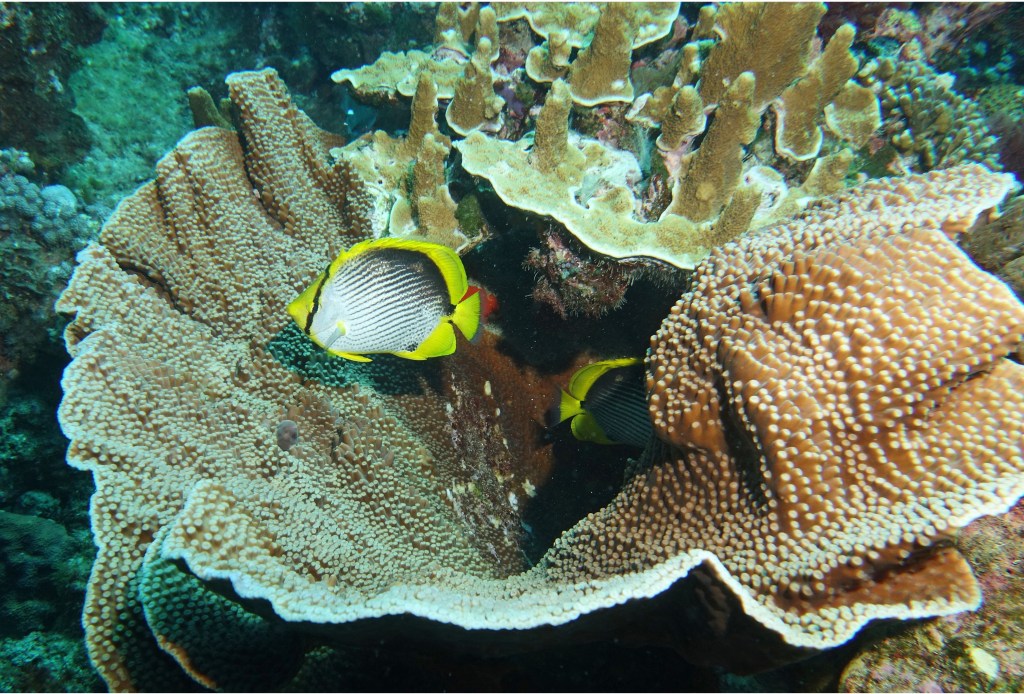Listen to Episode 133 on PodBean, YouTube, Spotify, or wherever you’ll enjoy it most!
None of us are alone. Each of our bodies has its own share of parasites, hitchhikers, and tiny helpers, and indeed, every ecosystem on Earth features integral examples of organisms living in close relationships. This episode, we discuss the diversity, deep history, and dramatic impact of Symbiosis.
In the news
This sauropod suffered a disease in its air sacs, similar to modern birds
It seems pterosaurs had a habit of regurgitating pellets
Jumping genes and the evolution of Australian venomous snakes
This Cretaceous croc had dinosaur remains in its belly
Life Intertwined
The exact definition of symbiosis has varied with time, but it generally refers to a close relationship between two or more unrelated organisms. The nature of these relationships can vary quite a bit.
A mutualistic relationship is one where all parties benefit: when a cleaner fish picks food from the teeth of a larger fish, the little partner gets a meal while the larger one (the host) gets a dental cleaning.
A commensalistic relationship is one where one partner benefits and the other is mostly unaffected, such as the many animals that make their homes on trees without much impact to the tree.
Antagonistic relationships, where a host is harmed to the benefit of symbionts, include many examples of parasites and pathogens.

Image: John Turnbull, CC BY-NC-SA 2.0
Nearly all living things are involved in some form of symbiotic relationship, and indeed, symbiosis is a fundamental aspect of life on Earth. Lichens are a symbiotic grouping of fungus and algae so intertwined that scientists give them shared species names, and they form a biological structure capable of surviving in places most other organisms can’t. The symbiotic relationship between corals and their photosynthetic algae is essential for the development of coral reefs, which are some of the most important and diverse ecosystems on our planet – a similar situation exists with land plants and their symbiotic relationship with microbes in the soil. And, of course, dear reader, you owe your own lifestyle to symbiosis, since your body is absolutely full of microbes – your microbiome – which allow you to digest the food you eat.
Prehistoric Partners
Unsurprisingly, symbiosis is a habit of life that goes back far into the fossil record. Paleontologists have found evidence of symbiosis as far back as the Cambrian Period: evidence of marine animals living on or inside other marine animals, examples of small worms inhabiting the tubes built by other worms, and chemical evidence of photosynthetic algae in ancient corals, just to name a few.

Left: Fossils from the Burgess Shale contain acorn worms (tube-builders) with polychaete worms living alongside them inside the tubes.
Right: Artistic reconstruction of the symbiotic worms by Christian McCall.
Images from Nanglu & Caron 2021.
Equally unsurprising, symbiosis has a major impact on evolution. Many symbiotic organisms evolve to rely on each other, such as the flowers that require animal pollinators to help them reproduce, an example of co-evolution. Another consequence of symbiosis is co-diversification, where symbiotic partners develop into new species in tandem; for example, when a population of birds becomes split in two and develops into two new species, their parasites will also become separated and diverge. Some scientists have even suggested that research should regard each organism as a ‘holobiont’ – an assemblage of host and all of its symbionts within.
Probably the most mind-blowing example of symbiosis impacting the course of life on Earth is the theory of symbiogenesis or endosymbiotic theory. Evidence suggests that modern-day eukaryotic cells (the cells of plants, animals, fungi, and more) are the result of a very ancient symbiosis. Chloroplasts (the organelles that permit photosynthesis in plant cells) and mitochondria (organelles that generate energy in eukaryotic cells) have striking anatomical and genetic similarities to bacteria, and it seems that these essential components of our cells got their start as symbiotic hitchhikers inside eukaryotic precursors. Cells-inside-cells gave rise to eukaryotes, and eukaryotes have fundamentally changed the shape of the Earth as we know it.

Image: Signbrowser, Public Domain
Learn more
Evolving together, the biology of symbiosis, 2000 (technical, open access)
Symbiosis: “Living together” in chaos, 2012, including a history of the term symbiosis (technical, open access)
Evolution:
Currency, Exchange, and Inheritance in the Evolution of Symbiosis, 2019 (technical, open access)
Extended genomes: symbiosis and evolution, 2017 (technical, open access)
Fossil examples:
Symbiosis in the Cambrian: enteropneust tubes from the Burgess Shale co-inhabited by commensal polychaetes, 2021 (technical, open access)
Detecting Photosymbiosis in Fossil Scleractinian Corals, 2017 (technical, open access)
—
If you enjoyed this topic and want more like it, check out these related episodes:
We also invite you to follow us on Twitter, Facebook, or Instagram, buy merch at our Zazzle store, join our Discord server, or consider supporting us with a one-time PayPal donation or on Patreon to get bonus recordings and other goodies!
Please feel free to contact us with comments, questions, or topic suggestions, and to rate and review us on iTunes
Since you’re concerned with super-power granting symbionts, how would one classify the babel fish? (https://rationalwiki.org/wiki/Babel_Fish)?
More seriously, where do mitochondria fall in the spectrum of symbionts?
LikeLike